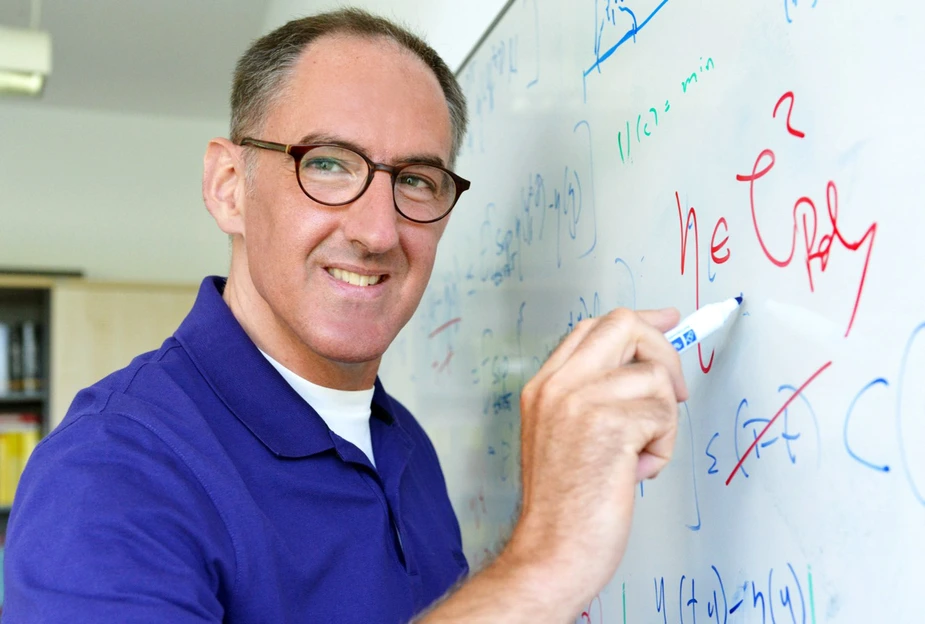A Visionary University
Research in Singapore, knowledge exchange with Princeton – the strategic partnerships of Humboldt-Universität (HU)
Jürgen Rabe and Ulrich Horst think a change of perspective in research and teaching is important. The two HU professors went to Princeton and Singapore.
Princeton University, the National University of Singapore and the Universidad de São Paolo – these are illustrious names. The three schools are among the top universities of their continents and so-called strategic partners of Berlin’s Humboldt-Universität (HU). Since international exchange is among the key factors for a successful future development, the HU has been expanding this network since 2012. The university’s strategic partners offer opportunities for exchange on multiple levels: bilateral research and teaching projects are put up for tender and selected by an interdisciplinary commission. More than 200 researchers in 36 projects have profited from this. The partner universities jointly develop programmes in research and teaching. Students benefit from 10 annual exchange positions and opportunities to take part in joint symposiums and other events. Lastly, the lively exchange between universities is continued on the governance and administration level. Two HU professors, who took part right from the beginning, tell us about their motivation and their experiences in Princeton and Singapore.
Prof. Dr. Jürgen P. Rabe is Professor for the physics of macromolecules and director of IRIS Adlershof, the Integrative Research Institute for the Sciences:
“Princeton University is undoubtedly in the international top ten, whether in research or in teaching. How do they meet their own declared aspiration to educate leaders in all possible fields – policy, business, science – for American society and the challenges of the globalised world? I wanted to find out more about that.
I have had contacts to Princeton for a while. During the spring term of 2014, I went there myself to do teaching and research. My research field, complex systems made up of optically and electronically active molecular nanostructures, is highly interdisciplinary and applied, so most of the people I collaborated with were dispersed across several institutes. My host was Prof. Steve L. Bernasek and I was a member of his working group. Taking part in weekly group seminars, I got to know students, associate professors and other guest scholars and their respective projects, which resulted in multifaceted cooperation. For example, some of their PhD students visited my group in Berlin and there were some joint publications.
My previous stays abroad, including the IBM research lab in California and ETH Zurich, were mainly research stays. Princeton was the first time I was also part of the faculty. It was special to see the American model of the bachelor-master-system we adopted in Germany up close. Together with a local colleague, I offered a lecture on a timely, research-led topic. We took turns, while the other was always in the auditorium. With this type of quality assurance, people realised that the HU’s research was on par with that of Princeton and that a stay at the HU was a viable option for Princetonians.
Naturally, there were also differences. For example, only 50% of credits can be spent in one’s major. Still, the system produces highly-skilled experts, not just all-rounders. Our concept of a degree qualifying for profession is more narrowly conceived. The deep insights that the strategic partnerships make possible can help to strike the right balance between specialisation and interdisciplinarity.”
Prof. Dr. Ulrich Horst is Professor for applied mathematical finance at the Humboldt-Universität zu Berlin:
“Long before the partnerships existed, I had good contacts to Singapore and Princeton. So, I was among the first participants when the HU’s cooperation with the National University of Singapore was consolidated. Asia is generally intriguing. In Singapore especially, outstanding commitment and considerable investment have produced wonderful conditions for research that attract top researchers from all over the globe. This makes for a very international atmosphere. University culture, however, is quite similar to that in America.
The campus is a distinct part of the city. I stayed in the “professor ghetto”, where one is treated exceptionally well. This let me focus completely on my research. The apartments are very near the campus. Everything is very easy to get to. I was there several times for four to five weeks and got to take a PhD student of mine. It is equally important for such young people to make themselves known on an international level and network. In future, we also want to facilitate joint master’s theses and, in the long-term, post-graduate programmes.
My academic host was the Risk Management Institute, where I did research on the systematic risks of financial markets. Moreover, I was interested in high-frequency trading, the kind of trading, where investment decisions are made in the nanosecond range. These require algorithms based on very simple decision criteria. The financial sector is very important in Singapore. Generally, research and teaching has a strong focus on application. Their understanding of research is different to that in Germany. I could imagine we have more academic freedom. Personally, my theoretical work in Berlin and the focus on application in Singapore complemented each other. Bringing those two aspects closely together is exciting. As always when you bring together the best of both worlds.
What you do in your spare time is actually very different. Due to the tropical climate and the city-state insularity, there are less outdoor activities. Going to the mall is one of the classic recreational activities. For Europeans, this way of organising one’s free time seems artificial. Meanwhile, however, I have gotten to know a good many people that aren’t in mathematics. Plus, Asian food is excellent”
Recorded by Uta Deffke for Adlershof Journal
